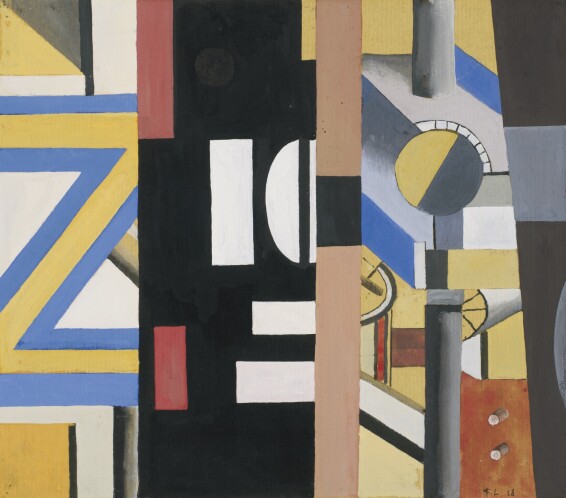- 40
Fernand Léger
Description
- Fernand Léger
- La gare
- signed F. L. and dated 18 (lower right)
- gouache and ink on paper
- 33 by 36.8cm.
- 13 by 14 1/2 in.
Provenance
Private Collection (acquired from the above in 1969)
Sale: Christie's, London, 9th February 2006, lot 611
Private Collection, Europe (purchased at the above sale. Sold: Sotheby’s, Paris, 1st June 2011, lot 41)
Purchased at the above sale by the present owner
Exhibited
Zurich, Kunsthaus Zürich, Fernand Léger, 1957, no. 158
Dortmund, Museum am Ostwall, Fernand Léger, 1957, no. 68
Baden-Baden, Staatliche Künsthalle, Fernand Léger, Gemälde, Gouachen, Zeichnungen, 1967, no. 33
Madrid, Fundación Juan March, Fernand Léger, 1983, no. 72
Jerusalem, The Israel Museum, Fernand Léger, Œuvres sur papier, 1989, no. 32
Milan, Palazzo Reale, Fernand Léger, 1989-90, no. 73
Villeneuve d'Ascq, Musée d'Art Moderne, Fernand Léger, 1990, no. 79
Paris, Galerie Berggruen & Cie, Fernand Léger, gouaches, aquarelles et dessins, 1996, no. 7
Literature
Condition
"In response to your inquiry, we are pleased to provide you with a general report of the condition of the property described above. Since we are not professional conservators or restorers, we urge you to consult with a restorer or conservator of your choice who will be better able to provide a detailed, professional report. Prospective buyers should inspect each lot to satisfy themselves as to condition and must understand that any statement made by Sotheby's is merely a subjective, qualified opinion. Prospective buyers should also refer to any Important Notices regarding this sale, which are printed in the Sale Catalogue.
NOTWITHSTANDING THIS REPORT OR ANY DISCUSSIONS CONCERNING A LOT, ALL LOTS ARE OFFERED AND SOLD AS IS" IN ACCORDANCE WITH THE CONDITIONS OF BUSINESS PRINTED IN THE SALE CATALOGUE."
Catalogue Note
By the time that Léger executed this work, he had already mastered the type of formal abstraction that had taken hold of the salons of Paris. This style, known as Synthetic Cubism, was rooted in abstraction and had come to represent the essence of modernity in the years before the war. Nearly a decade later, Léger felt that the abstraction of Cubism alone was not a sufficient means to represent the environment in which he lived. In post-war Paris he was overwhelmed by the mechanisation of the city – the automobiles, street cars, motorcycles, and, most impressively, the trains that sped along their steel rails at unprecedented speeds.
Léger sought to capture this sense of speed and energy in his works, and for many of his compositions from 1918, he chose to depict the rotating 'discs' of the urban landscape. In La Gare, he is able to capture all the elements that were emblematic of the urban experience, incorporating the very essence of the station – from the stencilled lettering on the side of a locomotive and rail track signals, to perforated sheets of metal, and the movement of pistons against the wheels of the train – in one brilliant pictorial amalgamation.

